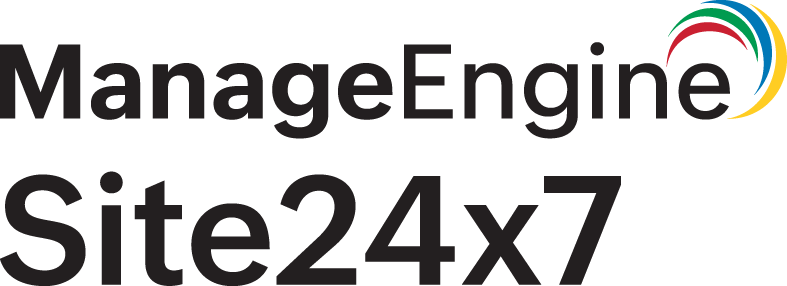Azure uptime monitoring
Site24x7’s Azure uptime monitoring helps you proactively track the availability and uptime of your Azure resources along with configuration inventory details, ensuring you detect outages before they impact your users. By leveraging Site24x7's integration with Azure Monitor, you can reduce operational overhead and optimize Azure monitor API usage without sacrificing visibility.
Azure uptime monitoring will disable performance metric data collection.
Key benefits
-
Proactive outage detection: Instantly detect and respond to resource downtime across regions and resource groups.
-
Optimized API cost: Azure uptime monitoring uses minimal API calls, helping you save on Azure Monitor costs.
-
Lightweight monitoring: Monitor availability without tracking full performance metrics, ideal for cost-conscious environments.
-
Seamless visibility: Get visibility into all your resources and their configuration details through preconfigured dashboards.
How Azure uptime monitoring works
Once Azure uptime monitoring is enabled, Site24x7 will:
-
Use Azure resource health API calls to periodically check the availability status of your selected Azure resources.
-
Record and display outage events in the Events Timeline.
-
Provide summaries of downtime, trouble, and critical events.
Performance metric collection is disabled by default in uptime-only mode. This helps reduce API usage and related costs.
Adding Azure uptime monitors based on tags
You can control which Azure resources are designated as Azure uptime monitors by using resource tags. This allows you to include resources dynamically based on your tagging strategy in Azure.
How it works
Site24x7 lets you configure tag-based filters to:
-
Include Azure resources with specific tags as uptime monitors.
This is particularly useful for large-scale Azure environments where not all resources need performance tracking.
Steps to add
-
Go to Cloud > Azure > navigate to your Azure monitor.
-
Click the hamburger icon
near the monitor name > Edit.
-
On the Edit Azure Monitor page, under Advanced Configuration, scroll down to the Uptime Monitoring Configuration section.
-
Under Include the Resources to be Uptime Monitors based on Tags:
-
Select whether the condition should match OR or AND logic.
-
Enter the tag key (e.g., subscription, env, or project).
-
Click the plus icon ➕ to add the tag to the filter.
-
Click Save to apply your changes.
Example: Configure Azure uptime monitoring using multiple tags
You can configure Site24x7 to track Azure uptime only for Azure resources that meet specific tag-based conditions. In this example, you'll set up monitoring for resources that match the following tags:
-
The custom tag key uptime_site24x7 is set to true.
-
The resource belongs to the pm team (tag: team: pm).
-
The resource is located in either the centralus or ukwest Azure region (tag: location: centralus or ukwest).
Steps to configure:
-
Go to Cloud > Azure and click Edit on your Azure monitor.
-
Expand the Advanced Configuration section.
-
Under Uptime Monitoring Configuration, choose AND to ensure all tag conditions must match.
-
Add the following tag filters:
-
uptime_site24x7 = true
-
team = pm
-
location = centralus, ukwest
-
Click Save.
Only the resources that satisfy all three conditions will be set up as uptime monitors.
Use this configuration to filter Azure uptime monitoring to production resources owned by a specific team and deployed in defined regions—ideal for reducing unnecessary API calls and improving monitoring relevance.
This tagging approach provides granular control over which resources you want to monitor for uptime, helping reduce noise and optimize monitoring costs.
How filtering works
-
It applies the Include tag filters as defined in your configuration.
-
The resources that match both the Azure Resource Filter and the Uptime Monitoring Configuration Filter are added as Azure uptime monitors.
-
If you have not configured any of the above uptime filters, no resource will be added as Azure uptime monitor.
-
Site24x7 auto-generates certain tags, including uptime_site24x7, resourceGroup names, location, serviceType, and subscription names, which can also be used to discover or group monitors dynamically.
Tag values are case sensitive and must match exactly.
Supported monitor types for Azure uptime monitoring
Azure uptime monitoring in Site24x7 supports the following Azure services:
Viewing Azure uptime and outages
In the Uptime Summary tab, you can:
-
View the Events Timeline, showing a visual representation of any downtime, critical errors, or maintenance periods.
-
Access Down, Trouble, or Critical History, detailing the time and duration of past outages.
Enabling Azure performance monitoring
To enable Azure performance data collection:
-
Log in to your Site24x7 account.
-
Go to Cloud > Azure and click the desired Azure resource monitor.
-
Navigate to the Uptime Summary tab.
-
Click Enable performance metrics collection if you wish to enable performance metric data collection and view time-series charts for CPU and memory usage.
-
Once enabled, Site24x7 will start tracking performance metrics and log any performance issues.
Optimize monitoring costs
Site24x7 minimizes the number of Azure API calls for Azure uptime monitoring, significantly reducing the monitoring cost:
-
API cost reduction example: ~$0.01 for 1000 API calls
-
Ideal for teams focused on budget control while ensuring high uptime
You can start with uptime-only mode and later enable full metric collection based on your needs.
